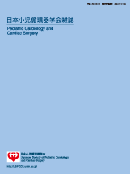Volume 28, Issue 5
Displaying 1-9 of 9 articles from this issue
- |<
- <
- 1
- >
- >|
Editorial
-
2012Volume 28Issue 5 Pages 239-240
Published: 2012
Released on J-STAGE: November 26, 2012
Download PDF (557K)
Review
-
2012Volume 28Issue 5 Pages 241-249
Published: 2012
Released on J-STAGE: November 26, 2012
Download PDF (802K)
Originals
-
2012Volume 28Issue 5 Pages 250-257
Published: 2012
Released on J-STAGE: November 26, 2012
Download PDF (966K) -
2012Volume 28Issue 5 Pages 258-265
Published: 2012
Released on J-STAGE: November 26, 2012
Download PDF (919K) -
2012Volume 28Issue 5 Pages 268-273
Published: 2012
Released on J-STAGE: November 26, 2012
Download PDF (1931K) -
2012Volume 28Issue 5 Pages 274-281
Published: 2012
Released on J-STAGE: November 26, 2012
Download PDF (963K)
Case Report
-
2012Volume 28Issue 5 Pages 282-286
Published: 2012
Released on J-STAGE: November 26, 2012
Download PDF (3069K)
Editorial Comments
-
2012Volume 28Issue 5 Pages 266-267
Published: 2012
Released on J-STAGE: November 26, 2012
Download PDF (564K) -
2012Volume 28Issue 5 Pages 287-289
Published: 2012
Released on J-STAGE: November 26, 2012
Download PDF (631K)
- |<
- <
- 1
- >
- >|
